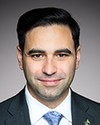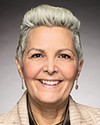My basic idea is that right now, the federal government has limited fiscal capacity. I think that before COVID, it had a lot more flexibility, but during the COVID regime, government deficits increased substantially.
If governments are going to be spending large amounts of money, we need to be thinking about where they spend it because they have a limited number of opportunities to spend large amounts of money. They can either spend it on pharmacare or a limited number of other programs. They have to make choices.
My fear is that we're going to end up like we were in the 1990s. I think seniors will remember the 1990s, when we got ourselves into such a bad situation in terms of public deficits that we ended up cutting back health care quite a lot. I don't want to return to those days where we can't afford to fund health care because we spent our public money unwisely.
We need to think about the hard choices we have to make.
The point I was making earlier is that it's true that many low-income seniors are in straitened circumstances—some are facing quite difficult challenges—but seniors are also among the wealthiest, highest-income people in our society. A broad-brush approach that gives money to the wealthiest in our society as well as those with low income in our society is probably not a good use of funds right now.
If it was prepandemic and the government's financial books were in a bit better state than they are now, then I would say that, yes, we can afford to do it.
However, right now it's not clear that we can, so we need to think about our priorities. Would we prefer to have better access to primary care in emergency rooms? Would we prefer to have pharmacare? Would we prefer to have dental care or would we prefer to have a 10% increase in OAS for people between 65 and 75?
Incidentally, my reading of the numbers shows that poverty rates are much higher for people just before they turn 65—in their late fifties and early sixties. They sort of hit a low in their early sixties and then they start to increase, so that by age 75, 85 and 90, they're much higher than they were at 65 to 75.
Almost all of that increase, incidentally, is among females. For males over age 65, the low-income rate is roughly flat as a function of age. For women, it's increasing with age. It really is the women over age 75—it's hard to draw an exact cut-off, but at some more senior age than 65 to 70—who are among the seniors experiencing higher poverty rates.
Having said that, people just short of 65 have higher poverty rates than even those who are 75 to 80. I think we do need to think very carefully about how we're spending our money, especially in these days where we have a limited amount of money in our kitty, as it were.





